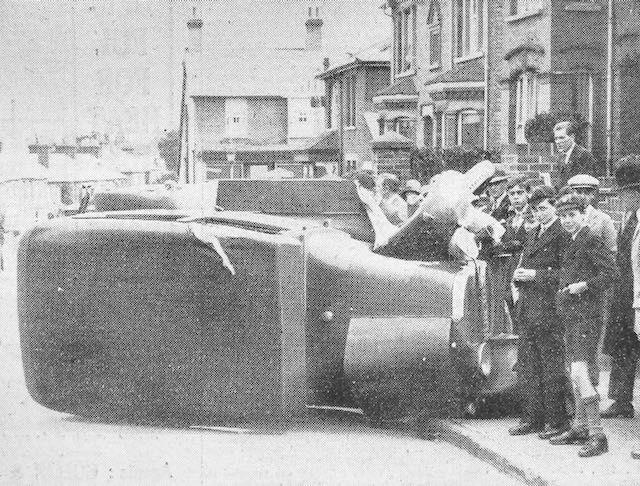The main road through Fleetville was, until c1880, a toll road (the Reading and Hatfield Turnpike). There were undoubtedly a number of accidents along its length westwards of Hatfield when its condition and visibility was poor, and width inadequate. But at least there were few local users – who would want to live along a road where you had to have your friends pay to visit or to have deliveries made? There were, as a result, no homes beyond St Peter's Road.
There were few rules of the road in the early 1900s and vehicles might be permitted to travel as fast as 10mph. Signs might be placed anywhere (with plenty of time to read them) and councils could justify any number of pedestrian crossings. But these freedoms and responsibilities did little to control the number and seriousness of accidents, and two notorious locations at the western and eastern limits of Fleetville were the scenes of many vehicle conflicts where speed was not the issue.
Ashley Road/Beechwood Avenue did not appear on accident stats until the 1930s as neither existed; today neither road would be permitted to join Hatfield Road unless the latter had been straightened first. That might have been possible at the time, but no authority was given to the county to pay for the land acquisition and road improvements. So, until the 1960s when traffic lights were installed, the exit from Ashley Road was blind to the right.
 |
| Bus and van crash outside the general store at the Crown Junction in 1935. HERTS ADVERTISER |
 |
| After a collision in 1931 a bus is shunted into Camp Road beside the shops in 1931. HERTS ADVERTISER |
 |
| A car on its side in Hatfield Road above the Crown junction in 1929, and attracting much interest. HERTS ADVERTISER |
The reason for widening next to the recreation ground in the 1960s was the number of accidents when visibility was poor around the bend opposite West & Sellick (now CAMRA) and street lighting was still the pre-war installation. Thick fogs were also quite common before the Clean Air Acts. Heavy road rollers and steam carriers were known to be hazardous, especially those hauling trailers, or those which unexpectedly off-loaded loose barrels, and especially vehicles which were attractive to small children nearby. Sudden noises might frighten horses pulling carts or wagons and cause them to run away with their tow.
 |
| A delivery van made it too literal at the Co-op grocery in Blandford Road in 1933. HERTS ADVERTISER |
Today's traffic flows may be substantially busier and kerbside parking potentially more dangerous, but perhaps most of us are better trained for driving and negotiating other road users. That must count for something.

No comments:
Post a Comment